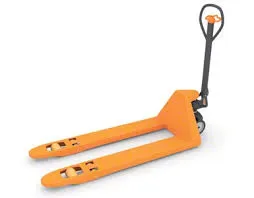


The Interplay of Chain Block and Lever Block in Lifting Mechanisms
In the realm of heavy lifting and material handling, the efficiency and safety of operations hinge significantly on the equipment employed. Among the plethora of devices available, chain blocks and lever blocks stand out as vital tools for lifting, lowering, and moving heavy loads. This article will delve into the intricacies of these two mechanisms, exploring their construction, functionality, advantages, and applications in various industrial settings.
Understanding Chain Blocks
A chain block, also known as a chain hoist, is a device that utilizes a chain and a pulley system to lift heavy objects. Its operation is straightforward when the user pulls on the chain, the block’s internal gears engage, allowing the load to be lifted with minimal manual effort. This mechanism is advantageous due to its ability to lift significant weights with greater control and safety.
Chain blocks are commonly constructed from robust materials designed to withstand heavy loads and harsh operating conditions. The chain itself is typically made from high-strength steel, ensuring durability and reliability. Additionally, chain blocks often feature safety mechanisms, such as overload protection and automatic braking systems, to safeguard against accidents caused by overloading or equipment failure.
The Role of Lever Blocks
On the other hand, lever blocks, or lever hoists, operate on a slightly different principle. They employ a lever mechanism, allowing the user to lift loads by applying force to a handle. The user pulls down on the lever, which in turn pulls the chain through a series of gears to elevate the load. This action requires significantly less effort than lifting the load manually, thereby reducing the physical strain on the operator.
Lever blocks are known for their portability and ease of use, making them an excellent choice for tasks requiring mobility and versatility. They often feature a compact design, enabling them to be easily transported from one location to another. Additionally, lever blocks can be used in both vertical and horizontal lifting applications, showcasing their adaptability across various job sites.

Advantages of Chain Blocks and Lever Blocks
Both chain blocks and lever blocks offer distinct advantages that cater to different lifting needs. Chain blocks are ideal for lifting heavy loads vertically, particularly in fixed installations like warehouses and factories. Their design allows for continuous operation, making them suitable for tasks requiring repeated lifting cycles.
Conversely, lever blocks excel in scenarios where portability and flexibility are crucial. They can be easily maneuvered in tight spaces and are well-suited for construction sites, automotive repairs, and other situations where loads need to be lifted at varying angles or locations.
Applications Across Industries
The applications of chain blocks and lever blocks span multiple industries. In construction, they are indispensable for lifting beams, trusses, and other structural elements. In manufacturing, these devices assist in assembly line processes and material handling. Additionally, they find utility in automotive shops, where mechanics require efficient ways to lift engines and other heavy components.
Furthermore, both devices are integral to rescue operations and lifting applications in emergency situations, where quick response times are essential. Their role in theater and film production is also noteworthy, as they are used to manage stage equipment and scenery.
Conclusion
In summary, chain blocks and lever blocks are crucial components of industrial lifting technology, each offering unique benefits tailored to specific lifting requirements. Understanding their operation, advantages, and applications allows businesses and operators to choose the appropriate device for their needs, ensuring both efficiency and safety in lifting operations. As industries continue to evolve, the importance of these tools will undoubtedly remain significant in the quest for enhanced productivity and safety in material handling.



